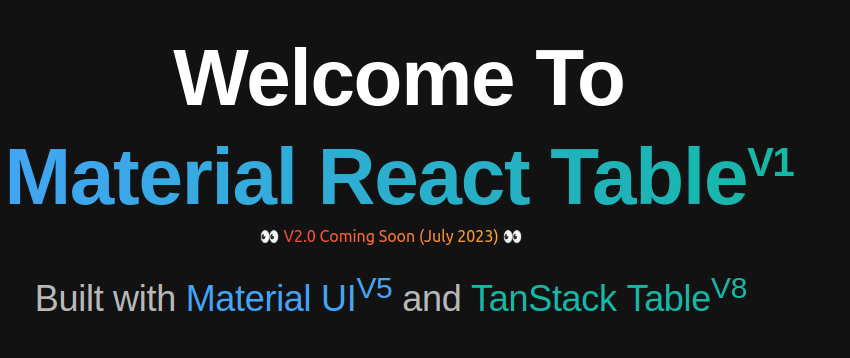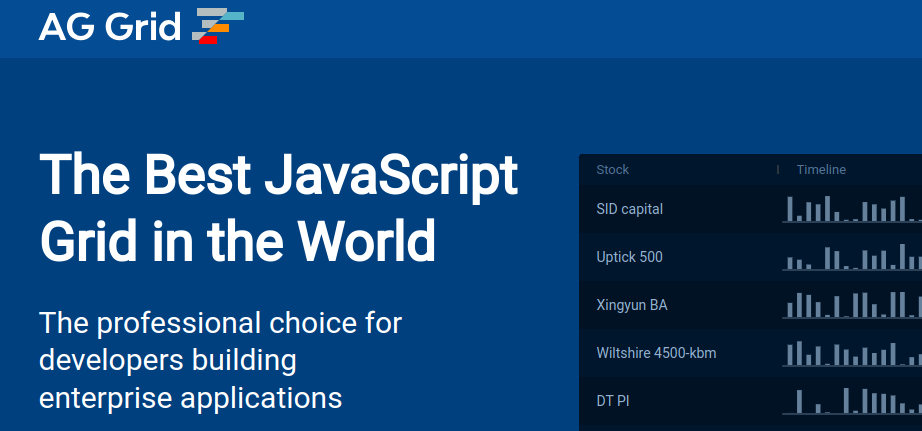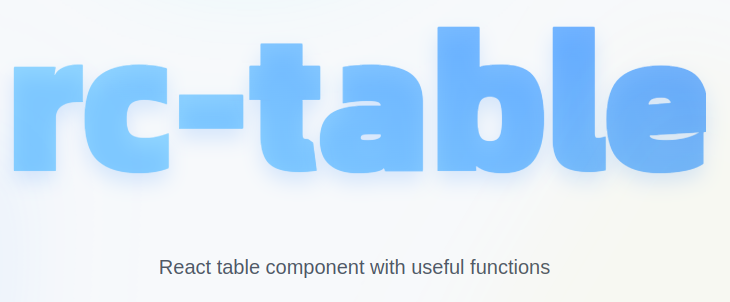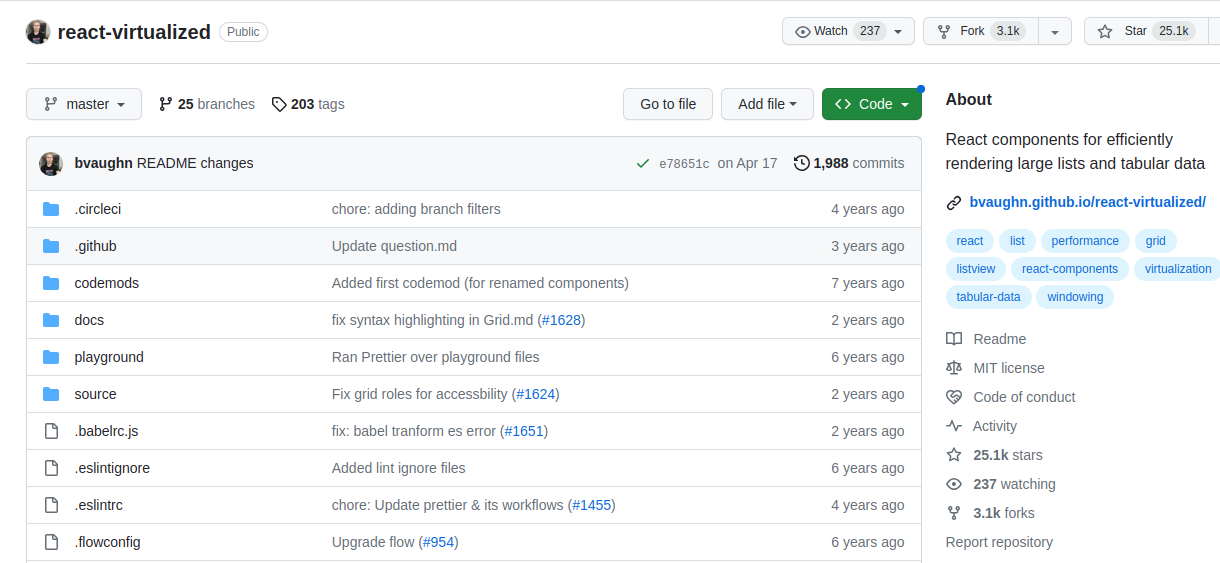React is one of the most used JavaScript UI libraries in modern web development. This library was released by Facebook in 2013 and has since been adopted by small and big names worldwide.
This library is loved for its component-based architecture, meaning the codebase is split into small, reusable components. With a composable architecture, each component can have its own properties and state, making it easy to update or manage specific parts of the user interfaces without altering the entire codebase.
React has various libraries that are designed for different purposes. React table libraries are a collection of pre-written code blocks or components developers can use to generate react tables. React tables makes it easy to present large datasets and make them more accessible to users.

React table libraries are essential in the following scenarios;
- To be efficient in development: With a React table library, you don’t have to write your code from scratch. You can thus save development time and focus on the functionality of your application.
- Data manipulation: Most React table libraries offer pagination, sorting, and filtering features. Users can thus quickly sort and manipulate data easily while interacting with such libraries.
- Customization: The boilerplate code that the React tables libraries provide is customizable. You can thus change the structure, and font, add or do away with various elements as it suits your needs.
- Accessibility: React table libraries have been created with accessibility in mind. Such tables adhere to accessibility standards by providing assistive technology and supporting keyboard navigation.
These are some of the critical React libraries you can use to create tables;
Data Grid
Data Grid is an extendable and fast React table and data grid. This library is written in React and has an API supporting theming, accessibility, and real-time updates. This library is built exclusively for React.
- Supports filtering, header filters, and multi-filters: You can filter your rows in the Data Grid library by clicking the filter button if you have enabled the toolbar or by clicking the ‘filter’ menu item.
- Row and cell editing: Data Grid library supports all the CRUD (Create, Read, Update, Delete) operations. Head over to the column definition area and enable the ‘editable’ property to make your columns editable.
- Pagination: You can paginate your tables using this library and fetch only the needed rows. However, the free version of this library supports only up to 100 pages.
- Customizable: You can customize the contents of the rows and columns easily. You can also add or delete rows/columns at will.
Material-table

Material-table is a Material-UI-based React table component. This library is free and open-source. You can install it through a package manager like NPM or Yarn.
Features
- Customizable: You can add/ delete rows and columns to your tables using this library. The ‘actions’ prop also allows you to add buttons to the rows/ columns in your tables.
- Custom column rendering: You can override a render of any column when using Material-table. A good example is when you set this library to render an image instead of its URL.
- Export: If you want to export the data in your web app, you can do so in CSV format.
- Styling: You can choose from the existing styling formats to make your tables more appealing. You can select a few parameters such as ‘style to apply all rows cells’ or ‘style to apply to specified cells’.
- Grouping: Using the Material-table library, you can group related data in one column.
React Table Library
React Table Library is a small-sized library you can use to add tables to your React application. This library needs @emotion/react and react-dom libraries for it to work.
Features
- Easy to use: After installing the necessary libraries, you can start copy-pasting code for the components you need in your application.
- Supports pagination: If the data in your table is a lot, you can apply the pagination feature on React Table Library for easy navigation.
- Customizable: The tables created using this library comes with boilerplate code. You can add new columns and rows or even delete them to suit your needs.
- TypeScript support: You can bootstrap your React application using TypeScript and enjoy the types feature while using this library. TypeScript makes it easy to catch errors early, as all variables must be declared before use.
- Various themes available: React Table Library has various built-in themes that you can use. You can as well create custom libraries.
Material React Table

Material React Table is a library built using Material UIV5 and TanStack TableV8. This library works best in projects already using MUI components, but not a must. MRT is written using TypeScript, making it a good option for developers who want to catch bugs and errors in their code early.
Features
- Great defaults: Material React Library has some great defaults to help you generate powerful tables. However, you can still customize them to perfection.
- Well-documented APIs: This library has several instance APIs at your disposal, such as Column Instance APIs, Table Instance APIs, Cell Instance APIs, and Row Instance APIs.
- Pagination: Material React Table library comes with a built-in pagination feature. Pagination is enabled by default. However, you can replace the built-in pagination with your server-side pagination or turn the feature off completely.
- Sorting: This library supports many sorting scenarios. However, you can implement server-side sorting on your tables to suit your needs.
AG Grid

AG Grid is a React library suitable for professional developers building enterprise applications. This library is suitable for plain JavaScript applications and JavaScript libraries and frameworks.
Features
- Integrated charting: AG Grid has several charting tools that allow you to generate charts from your tables.
- Supports exporting: The built-in export feature makes exporting data in the xlsx format easy.
- Transaction update: You can add/delete/update many rows in the grid using the transaction update feature. This feature is fast to ensure users get real-time updates.
- Row grouping: You can use the ‘group by’ operation to group rows by columns. You can configure your application to display rows in a grouped state or set it to group them programmatically.
- Server-Side Row Model: Using the Server-Side Row Model, you can allow your React application to work with large datasets. This feature lazy-loads data from the server.
Tabulator

Tabulator are interactive table and data grids for React and JavaScript. With this library, you can generate tables from JSON formatted data, a JavaScript array, or an HTML table. You can add Tabulator to your project using a CDN link or install it as a package using NPM or Bower.
Features
- Packaged themes: This library has five pre-packaged themes that you can choose from. You can also customize your tables to suit your brand.
- CSS styling: All the graphical elements in your React tables are assigned classes that you can use for further styling.
- Data exports: Tabulator allows you to export data in XLSX or CSV formats and download it to your local machine.
- Filter and sort: You can filter columns and rows in your table to display data that only matters to you.
- Responsive layout: Tables created using Tabulator are designed to respond to different screen sizes.
Rc-table

Rc-table is a React table component packed with useful functions. This library comes as an NPM package and has 5 dependencies.
Features
- Easy to use: Simply install Rc-table through NPM, then run npm install, and all the other dependencies will be picked. You can then start importing the features you need in your app from this library.
- Customizable: Rc-table comes with a few defaults on the components it provides. However, you can still add/ delete columns/rows on these tables. Edit the contents of the tables with your own words as well.
- Open-source: Rc-table is a free-to-use library under an MIT license.
- Extensible: You can add custom styles to Rc-table.
- Responsive: This table component is designed to respond to different screen sizes. Thus, users can access your tables’ contents irrespective of whether they are browsing your app on mobile devices or computers.
React-virtualized

React-virtualized is a collection of React components that allows developers to display large lists and tabular data. This library comes as a React package that you can install using NPM. Most of its dependencies are managed by NPM automatically.
Features
- Supports customization: React-virtualized has various defaults that will save you development time. However, you can still customize the contents of the components to suit your brand needs.
- Multi-grid: Using this feature, you can stitch together several grids to form a fixed row/ column interface.
- ArrowKeyStepper: You can decorate a ‘Grid’, ‘List’ or “Table’ using this high-level component in React-virtualized. ArrowKeyStepper adds a
<div>element on its children, thus attaching a key-down event handler. After enabling this feature, users can scroll up/down or right/left within the grid of your table. - Supports most browsers: React-virtualized works perfectly with modern browsers like Firefox and Chrome. You can also use this library on mobile browsers.
- Supports Reverse Order: If you have a table showing ten items per page, you can format the table from No. 10 up to No. 1. Simply add the items you want to display in front of the list ‘unshift’.
Conclusion
You can create awesome tables and make your data easily accessible and more appealing using the above React libraries. You can use more than one React library in your application, depending on the features you are looking for.
You may combine these libraries with React charting libraries to make your data more insightful.

